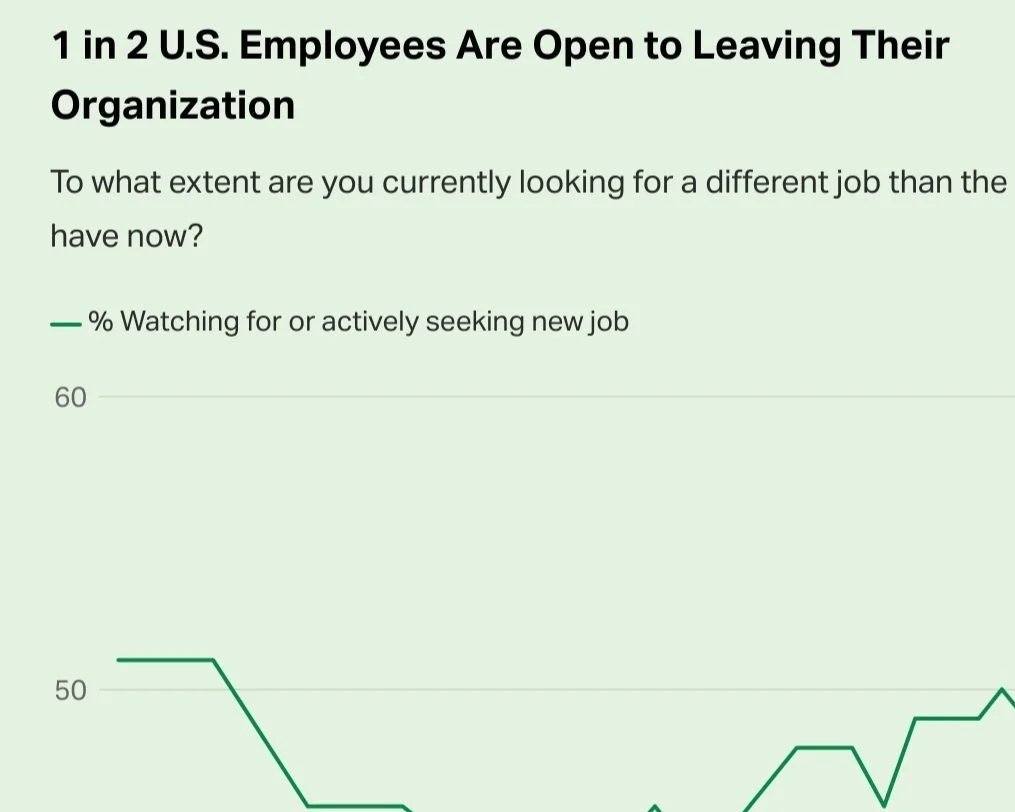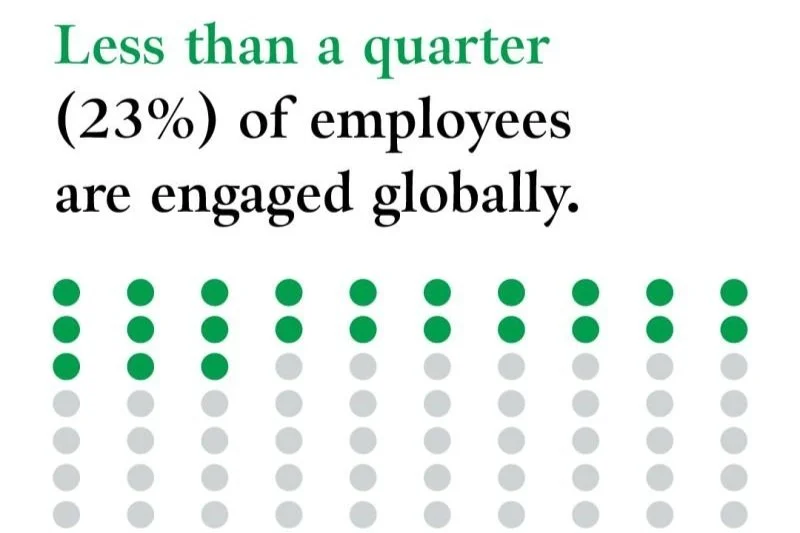Industry Articles
-

Key HR Statistics And Trends In 2024
From Forbes:
The world of human resources is constantly changing as technology and culture evolve. To help you stay abreast of the latest trends, we’ve compiled the top HR trends for 2024. Use these HR statistics to guide your organization’s growth and retention strategies.
-

This Fixable Problem Costs U.S. Businesses $1 Trillion
From Gallup:
A trillion dollars.
That's what U.S. businesses are losing every year due to voluntary turnover. And the most astounding part is that most of this damage is self-inflicted.
The cost of replacing an individual employee can range from one-half to two times the employee's annual salary -- and that's a conservative estimate.
-

Employee Retention & Attraction
From Gallup:
As leaders seek to retain and attract talent, understanding more about employee perceptions of the job climate and why they choose to leave or join an organization is critical. Employers can evaluate how these details relate to their own culture to create strategies for curtailing turnover, attracting top talent and keeping their star employees from being wooed away.
-

Transportation, Hospitality & Services: Retention
From Deloitte:
Frontline hospitality and transportation workers are critical to your organization’s success. They interact directly with your customers, ensure the health and safety of your workplaces, and (literally) keep the trains and buses running on time. They are difficult to attract and expensive to replace, so shouldn’t you do everything possible to retain them? Reducing turnover makes both financial and operational sense. The average cost to replace employees can range from one-half to two times their annual salary. And employees who stay longer are more experienced and productive—with higher morale and job satisfaction, contributing to better customer service.
-

How to Improve the Engagement and Retention of Young Hourly Workers
From Harvard Business Review:
What would you do if the majority of your entry-level, hourly workforce was planning to leave in less than a year? More than half of the 1,200 young people working in entry-level jobs we surveyed said that was their plan — and less than a quarter felt highly satisfied with their job. That’s expensive for business. Turnover can cost up to 200% of an employee’s annual salary, depending on the role. In industries like retail, customer service, and hospitality, entry-level turnover alone costs billions of dollars each year, based on voluntary turnover rates and annual replacement costs. Meanwhile, employee disengagement results in higher absenteeism, more accidents, lower business profitability, worse customer service, and a lower share price.
-

HR's New Role
From Harvard Business Review:
Though the human resources function was once a strong advocate for employees, in the 1980s things changed. As labor markets became slack, HR shifted its focus to relentless cost cutting. Because it was hard for employees to quit, pay and every kind of benefit got squeezed. But now the pendulum has swung the other way. The U.S. unemployment rate has been below 4% for five years (except during the Covid shutdown), and the job market is likely to remain tight. So today the priorities are keeping positions filled and preventing employees from burning out. Toward that end HR needs to focus again on taking care of workers and persuade management to change outdated policies on compensation, training and development, layoffs, vacancies, outsourcing, and restructuring.
-

Managers are overwhelmed as they toil under bigger workloads and 50% say their well-being has deteriorated
From Fortune:
Managers are Overwhelmed – It's Time to Act
The latest data is clear: 71% of managers are experiencing heavier workloads, and 50% report deteriorating mental health. It's a tough time to be a leader, especially when layoffs and hiring freezes are stretching teams thin. Managers are not just feeling the pressure—they're burning out.
This is more than just a problem for managers. When they struggle, their direct reports and entire teams feel the impact, leading to lower employee engagement and retention. In fact, the 2024 Workforce Trends Report highlights that managers are pivotal in driving employee engagement—but without the right support and tools, their ability to do so is severely compromised. -

State of the Global Workplace
Globally, only 30% of managers and 23% of employees overall are engaged at work. Loneliness also remains a pressing issue, with 20% of employees reporting they felt lonely for much of the previous day. Adding to these challenges, employee wellbeing declined from 35% in 2022 to 34% in 2023.
The future of work will be shaped by how leaders respond to these insights.
